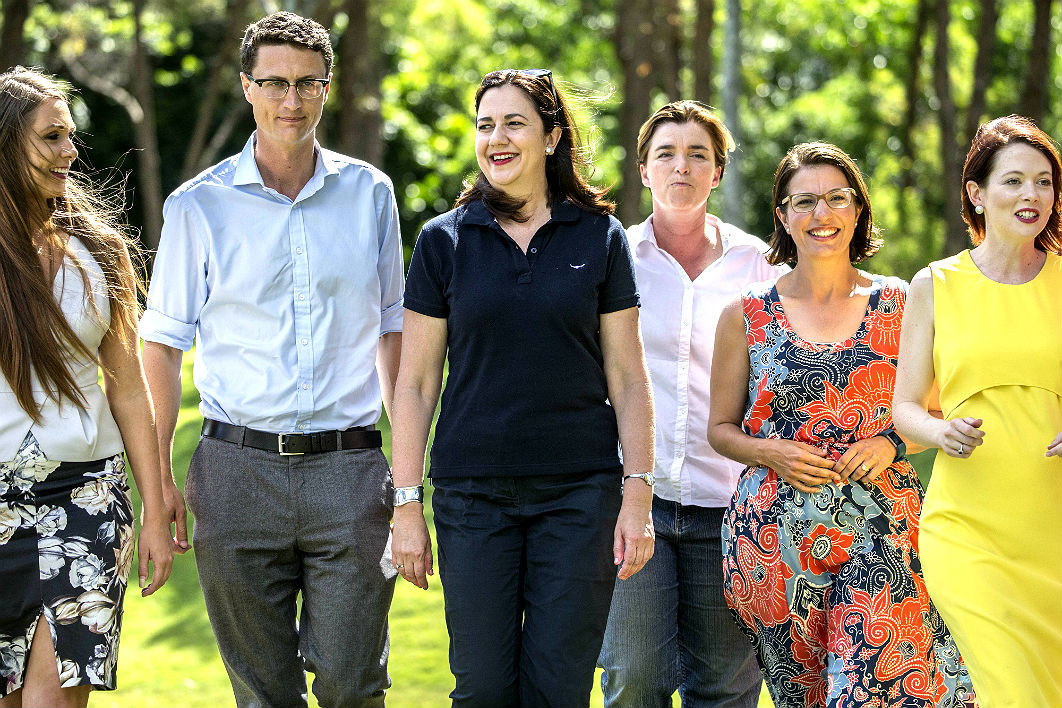Saturday’s election in Queensland, still days away from a full reckoning, produced an outcome rather like the status quo, at least at the micro level. Annastacia Palaszczuk’s Labor government went into the contest with a notional (post-redistribution) tally of forty-seven out of ninety-three seats — the barest of majorities — and it looks like that’s what it will emerge with. The LNP opposition started with forty-one and is predicted to finish with (around) forty-one.
On paper, there’s a statewide two-party-preferred swing to Labor of around 1.5 per cent (putting it at 52.5 per cent compared to the Coalition’s 47.5). But the recent change from optional preferential voting to full compulsory preferential voting, or CPV, makes that figure a bit misleading. Had the 2015 election been held under CPV, Labor’s after-preferences vote that year would have been a percentage point or two higher, which implies a swing of approximately zero on Saturday. Around five seats will change hands, give or take several.
But below the surface there was drama aplenty, much of it driven, as Tim Colebatch noted yesterday, by a 10 per cent drop in major-party first-preference support. Combined with CPV, this made preferences crucial — arguably more important than ever before. At time of writing, counting in several electorates is still volatile, with candidates dropping in and out of the two-candidate-preferred tallies.
Because preferences mattered so much, how-to-vote cards did too. Labor’s policy of putting One Nation last made it all but impossible for the minor party to emerge victorious from a two-candidate-preferred count against the LNP. This narrowed down the potential One Nation gains to electorates where Labor was the chief major-party competitor. The LNP generally obliged with One Nation–friendly cards, but the minor party simply didn’t attract the support to be competitive in more than a few contests. (At time of writing, One Nation’s seat haul seems to be between zero and two.)
Labor did preference Katter’s Australian Party, and so did the LNP and One Nation. That’s a major reason why it looks to have outperformed One Nation.
LNP cards, meanwhile, boosted Labor against the Greens. Deputy premier Jackie Trad, for example, has the Brisbane South LNP candidate to thank for her survival against the Greens challenge. One Nation’s cards, preferencing against sitting MPs in most of the electorates it contested, would have had some impact, although the extent to which the party attracted the volunteers it needed to thrust those bits of paper into voters’ hands isn’t known. In a seat like Aspley, where One Nation preferenced the Labor candidate (who is currently ahead in the count), it might have made the difference.
One Nation underperformed dreadfully against general expectations in Western Australia earlier this year, and the pattern was repeated on Saturday. Our increasingly facile mainstream media finds Pauline Hanson irresistible; a television show or newspaper, having made the decision to splash her around, feels the need to justify the coverages by overstating One Nation’s chances of electoral success. Even those supposedly efficient distillers of information, the betting markets, fell for the hype.
And because the tropes of Australian political commentary run like clockwork, prime minister Malcolm Turnbull is being blamed for this result. But while the state–federal electoral dynamics are undeniable — the presence of a party in government in either sphere tends to damage the election chances of its colleagues in the other — popularity or performance is ony a minor variable. Queensland Labor’s — and Victorian, South Australian and Tasmanian Labor’s — best election results since Federation were recorded during John Howard’s long reign as prime minister.
Which brings us to the topic of the next federal election, likely to be held late next year. At the 2016 poll, the two states that recorded the smallest swings to federal Labor, Queensland and Victoria, were the ones that had elected state Labor governments during the previous federal term. The survival of the Palaszczuk government last weekend will boost the federal Coalition’s stocks in that state at the next federal contest. Peter Dutton, who may well be prime minister by then, and who survived in 2016 with a 1.6 per cent margin, can breathe a sigh of relief. An LNP victory on Saturday would have been bad news for his chances of survival.
And finally, Queensland, having returned to CPV, may provide a glimpse of the future of federal elections. In particular, the north and west of the state, where major-party support is particularly low, provide fertile ground for minor parties and independents. CPV (compared to optional preferential) increases the likelihood of candidates with modest primary support leap-frogging several others to victory. Queensland’s statewide major-party vote of about 70 per cent on the weekend is not far below current national polling figures (which hover around the mid seventies).
Until now, Australia has only used CPV in the context of high major-party support. Over recent decades that support has declined, and if the trend continues we can expect to see the multiple three- or four-way contests that Queensland exhibited — with candidates slipping in and out of the two-candidate-preferred counts, the commission recasting preference allocations, and recasting again, over the course of long counts — become an increasingly common feature of national elections. (It already happens in small numbers, and usually involves the Greens.)
And how-to-vote cards, which large proportions of the voting population blindly follow, will become ever more powerful. Which is why we can expect increased discussion of banning how-to-vote cards. ⦁





